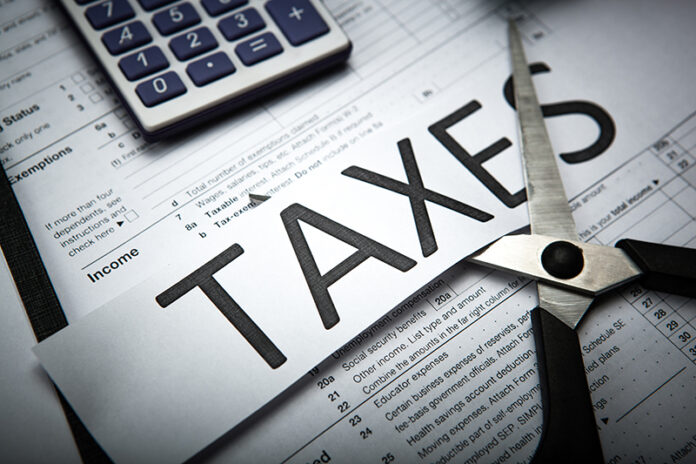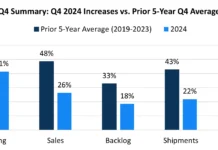by Michael J. Devereux II, CPA, CMP, partner, Wipfli
With 2021 in the rearview mirror, plastics processors are beginning to close their books for the calendar year and begin tax filing season for tax year 2021. Processors are embarking on this process with a murky view of what taxes will look like in tax year 2022 and subsequent years.
The following will provide some insights that plastics processors may consider as they determine what they owe Uncle Sam, along with an outlook on tax policy, driven by the current Congress and Administration.
Research & Development Tax Credit
Prior to 2022, and since 1954, taxpayers have been allowed to elect to deduct research expenditures in the tax year in which they were paid or incurred. For tax years beginning after December 31, 2021, the Tax Cuts and Jobs Act (TCJA) requires Section 174 expenditures (specified research or experimental expenditures) to be capitalized and amortized ratably over a five-year period. For tax years beginning before January 1, 2022, taxpayers can elect to deduct Section 174 expenditures.
Since the TCJA was made law, there have been multiple bills introduced in direct response to the Section 174 capitalization/amortization requirements to amend, remove, or change the TCJA law regarding Section 174 expenditures; however, likelihood of corrective legislation remains uncertain. The Build Back Better Act (BBBA), which at the time of writing this article was stalled in the Senate, included a temporary fix to the research expensing regime by delaying the implementation of the TCJA provision until 2026.
In addition to the deduction for research and experimentation, many plastics processors are eligible for R&D tax credits. The R&D tax credit is one of the most under-utilized tax savings opportunities for companies in the plastics industry. The R&D tax credit rewards companies that invest resources in innovation, product/part design and development, mold design, new materials or resins and process development/improvement. In addition to Federal tax savings, over 30 states have a similar program that rewards companies for development or improvement to its products or processes.
Methods of accounting
Even with the Tax Cuts and Jobs Act (TCJA) being passed more than four years ago, there still is value in plastics processors revisiting their methods of accounting. Prior to the TCJA, most processors were required to be on the accrual method of accounting for purposes of recording their revenue and related deductions. However, processors with annual average gross receipts of $26 million or less for the prior three tax years may use the cash method of accounting, regardless of the company’s entity structure. That is, the processor will recognize revenue when it receives the cash and claim deductions when the expense is paid.
Further, taxpayers meeting the same revenue thresholds may also look to changing their method of accounting related to inventory, including whether they are required to capitalize the cost of overhead into year-end inventory amounts. Processors considering whether changing their accounting method makes sense for tax year 2021 also should consider the potential for increased tax rates in future years.
Capital assets
Most plastics processors have taken advantage of the generous bonus depreciation provisions that were renewed in the TCJA. Absent a law change, tax year 2022 is the last year in which plastics processors can write off 100% of the capitalized amounts of eligible property, with the bonus percentage phased down from 80% in 2023 to 20% in 2026. With 2022 being the last year of 100% bonus depreciation and the potential for longer lead times given the current global supply chain challenges, plastics processors will want to get a head start on capital expenditure planning.
Processors are eligible for the 100% bonus depreciation for both new and used assets, including qualified improvement property. Qualified improvement property includes improvements made to the interior of the building, such as cleanrooms, office buildouts and cell-specific improvements.
Smaller and medium-sized businesses also are eligible for Section 179 expensing related to plant improvements, including roofs, HVAC systems, fire protection systems, security and alarm systems. The maximum Section 179 deduction is $1.05 million, with the maximum amount being reduced dollar-for-dollar for purchases exceeding $2.62 million for the tax year.
Employee Retention Tax Credit
The Employee Retention Credit (ERC) initially did not get much press when it was introduced by the Coronavirus Aid, Relief and Economic Security Act (CARES Act) since those receiving Paycheck Protection Program (PPP) funds were prohibited from claiming the credit. But when the Consolidated Appropriations Act of 2021 (CAA) removed this restriction, many plastics processors found themselves eligible for the ERC.
While the Bipartisan Infrastructure Framework (BIF) eliminated the ERC for the 4th quarter of 2022, many plastics processors find themselves still eligible for tax year 2020 and the first three quarters of 2021. The ERC is capped at $5,000 per employee in tax year 2020, but eligible organizations may qualify for up to $7,000, per employee, per quarter.
Business meals
Generally, food and beverage expenses associated with operating a taxpayer’s business are deductible, subject to a 50% limit. While the TCJA eliminated the deduction for entertainment (an expenditures regularly grouped and recorded with business meals), the CARES Act provides for an exception to the 50% limit for any food or beverages provided by a restaurant for tax years 2021 and 2022. Worth noting, takeout and delivered business meals that were provided by a restaurant in 2021 or 2022 also are fully deductible.
Tax policy and potential legislation
As noted, the President’s Build Back Better Act is stalled in the Senate, but that will not stop the Administration’s efforts to work with Congress to pass its spending and taxing priorities. As such, processors should monitor Congress’ efforts, as the changes being contemplated will have a significant impact on the amount of Federal income tax plastics processors will pay in future years. While the increased tax rates and estate tax changes did not make their way into the House-passed BBBA bill, tax increases impacting plastics processors, such as the 3.8% net investment income tax (NIIT) applying to ordinary S Corporation income regardless of whether the owner materially participates, still made their way into the House-passed BBBA. As such, processors should be cognizant that tax increases could be on the horizon, therefore impacting their decision-making as it related to 2021 tax year decisions.
Michael J. Devereux II, CPA, CMP, is a partner and director of Manufacturing, Distribution & Plastics Industry Services for Wipfli. Devereux’s primary focus is on tax incentives and succession planning for the manufacturing sector. He regularly speaks at manufacturing conferences around the country on tax issues facing the manufacturing sector.
More information: mike.devereux@wipfli.com or www.wipfli.com





